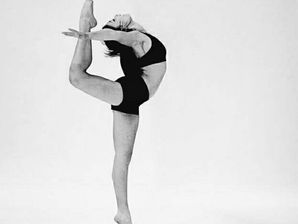Sports focused physical therapy & performance training in Algonquin, IL
How We Treat
3D Mobility
MORE TREATMENTS
Leverage your mobility in a whole new way. Our bodies move dynamically in 3 planes of movement, why shouldn't your mobility program do the same? Adequate mobility is important to be able to have proper movement efficiency and perform at your peak ability. Mobility is different than flexibility.
Flexibility refers to the ability of a muscle, or a group of muscles, or tendons to lengthen and stretch.
Mobility is dynamic; it means your muscles are lengthening and shortening while your joints are also moving. Your muscles and joints work together to move your body through a wide range of motion which requires adequate strength and control.
Mobility is having strength within your flexibility. Poor mobility can put you at higher risk for injury and limit your performance. Conversely, injuries often restrict your mobility. Over time, restricted mobility can lead to joint degeneration and pain.
CONSIDERATIONS WHEN IMPLEMENTING A MOBILITY PROGRAM:
What is your sport and position? Certain sporting acitivities can create muscle imbalances which need to addressed in the off season. For example, pitchers often lose shoulder mobility which can create increased strain on the elbow.
Where are you in your season? Implementing new exercises while in season needs to be carefully monitored as this can change lead to changes in your form and performance.
Be pateint! Mobility training takes consistent time and regular practice to see results; the literature shows training 3-4x/week for 12 weeks is needed to see gains.
Prioritize form over reps and aggressive work. Poor form can increase your risk of injury.
Mobility Techniques
A method of stretching that elongates soft tissues just past the point of tissue resistance and then held in the lengthened position with a sustained stretch force over a period of time, usually 15-60 seconds. Best done after activity to cool the body down and to increase muscle length in tight tissues. This also helps the body to decrease heart rate and aid in returning the body to homeostasis.
A method that involves moving a soft tissue gradually to increase reach, speed of movement, or both by using controlled leg, arm, or trunk swings that gently take the tissues to the end range. Best done as an active warm-up prior to activity. This helps to increase heart rate and prepares the body to move and increases heart rate. Dynamic warm ups should be done to the point that an individual begins to sweat.
PNF (Proprioceptive Neuromuscular Facilitation)
is a more advanced form of flexibility training, which involves both the stretching and contracting of the muscle group being targeted. It is also excellent for targeting specific muscle groups, and as well as increasing flexibility, it also improves muscular strength.
Foam rolling, lacrosse ball, and other tools can be used for mobility work.











